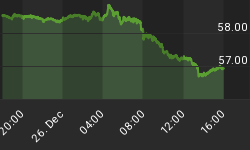Our monthly Monetary Watch, an Austrian take on where we are on the monetary inflation front examining the money creation activities of the Federal Reserve and private banks...
True "Austrian" Money Supply TMS
The U.S. money supply aggregates based on the Austrian definition of the money supply, what Austrians call the True Money Supply or TMS, saw robust growth in April, with narrow TMS1 posting an annualized rate of increase of 10.7% and broad TMS2 showing an annualized rate of increases of 16.5%. That brought the annualized three-month rate of growth on TMS1 and TMS2 to 8.0% and 13.7% respectively, up 270 and 390 basis points from the growth rates seen in March.

Turning to our longer-term twelve-month rate of growth metrics - more indicative of the underlying trends - and focusing on our preferred TMS2 measure, we find that TMS2 continues to march higher, in April growing at an annualized rate of 11.0%. That's up 40 basis point from March and 120 basis points from the recent low of 9.8% seen back in November 2010. That's also the 28th time in the last 29 months that TMS2 posted a twelve-month rate of growth in the double digits, equating to a cumulative increase of some 35% over those 29 months. As readers of the Monetary Watch are aware, the run-up to the now infamous housing bubble turn credit implosion turn Great Recession saw a string of 36 months of double digit growth for a cumulative increase of 48%. So, on the heels of two massive asset monetization programs - namely QE I and QE II - the Federal Reserve has been behind a monetary largesse that, in terms of time and size, is now fully 81% and 73%, respectively of that which brought on the Great Recession. Supported by a QE II asset purchase program likely to extend through the end of June, this means that this, our current monetary inflation cycle, is on track to produce a cumulative monetary infusion of near 40% by the time America is celebrating the 4th of July. Yes, not as large as the last inflation cycle, but one we think has the makings of still more to come.
To that question we now turn. To lay the groundwork, first, as we do each month, a look at TMS2 internals...
More charts and commentary available at: http://blogs.forbes.com/michaelpollaro/2011/05/16/monetary-watch-april-2011-qe-iii-courtesy-of-the-private-banks
















